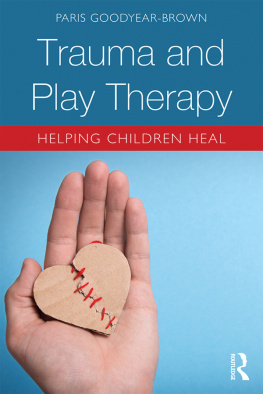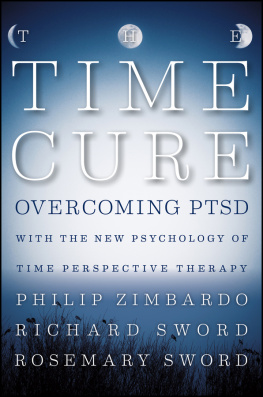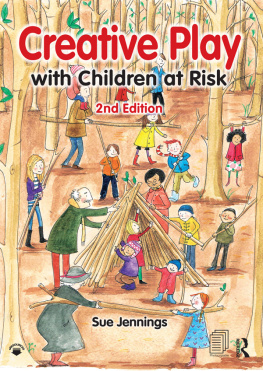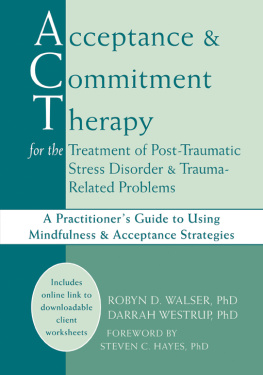THE PLAYING CURE
CHILD THERAPY SERIES
A SERIES OF BOOKS EDITED BY CHARLES SCHAEFER
Cognitive-Behavioral Play Therapy
Susan M. Knell
Play Therapy in Action: A Casebook for Practitioners
Terry Kottman and Charles Schaefer, Eds.
Family Play Therapy
Lois Carey and Charles Schaefer, Eds.
The Quotable Play Therapist
Charles Schaefer and Heidi G. Kaduson, Eds.
Childhood Encopresis and Enuresis
Charles Schaefer
The Therapeutic Powers of Play
Charles Schaefer, Ed.
Play Therapy Techniques
Donna Cangelosi and Charles Schaefer, Eds.
Children in Residential Care: Critical Issues in Treatment
Charles Schaefer and Arthur Swanson, Eds.
Therapeutic Use of Childs Play
Charles Schaefer, Ed.
Clinical Handbook of Sleep Disorders in Children
Charles Schaefer, Ed.
Clinical Handbook of Anxiety Disorders in Children and Adolescents
Andrew R. Eisen, Christopher A. Kearney, and Charles Schaefer, Eds.
Practitioners Guide to Treating Fear and Anxiety in Children and Adolescents: Cognitive-Behavioral Approach
Andrew R. Eisen and Christopher A. Kearney
Words of Wisdom for Parents: Time-Tested Thoughts on How to Raise Kids
Charles Schaefer, Ed.
The Playing Cure: Individualized Play Therapy for Specific Childhood Problems
Heidi G. Kaduson, Donna Cangelosi, and Charles Schaefer, Eds.
101 Favorite Play Therapy Techniques
Heidi G. Kaduson and Charles Schaefer, Eds.
THE PLAYING CURE
Individualized Play Therapy
For Specific Childhood Problems
Edited by
Heidi G. Kaduson
Donna Cangelosi
Charles E. Schaefer

The editors gratefully acknowledge permission to reprint excerpts from the Diagnostic and Statistical Manual of Mental Disorders, Fourth Edition. Copyright 1994 American Psychiatric Association.
A JASON ARONSON BOOK
ROWMAN & LITTLEFIELD PUBLISHERS, INC.
Published in the United States of America
by Rowman & Littlefield Publishers, Inc.
A wholly owned subsidiary of The Rowman & Littlefield Publishing Group, Inc.
4501 Forbes Boulevard, Suite 200, Lanham, Maryland 20706
www.rowmanlittlefield.com
PO Box 317
Oxford
OX2 9RU, UK
Copyright 1997 by Jason Aronson Inc.
First Rowman & Littlefield Edition 2004
All rights reserved. No part of this publication may be reproduced, stored in a retrieval system, or transmitted in any form or by any means, electronic, mechanical, photocopying, recording, or otherwise, without the prior permission of the publisher.
British Library Cataloguing in Publication Information Available
Library of Congress Cataloging-in-Publication Data
The playing cure : individualized play therapy for specific childhood problems / [edited] by Heidi G. Kaduson, Donna Cangelosi, Charles E. Schaefer.
p. cm.
Includes bibliographical references and index.
ISBN: 978-0-7657-0021-6
1. Play therapy. 2. Child psychology. I. Kaduson, Heidi. II. Cangelosi, Donna M. III. Schaefer, Charles E.
[DNLM: 1. Play therapyin infancy & childhood. WS 350.2 P723 1996]
RJ505.P6P58 1996 |
618.92891653dc20 |
DNLM/DLC |
For Library of Congress | 96-22725 |
Printed in the United States of America
 The paper used in this publication meets the minimum requirements of American National Standard for Information SciencesPermanence of Paper for Printed Library Materials, ANSI/NISO Z39.48-1992.
The paper used in this publication meets the minimum requirements of American National Standard for Information SciencesPermanence of Paper for Printed Library Materials, ANSI/NISO Z39.48-1992.
Contents
James M. Briesmeister
DArcy Lyness-Richard
Ris VanFleet
Jo Ann L. Cook
Donna M. Cangelosi
Janine S. Shelby
Pamela E. Hall
Heidi Gerard Kaduson
Neil Cabe
Heidi Gerard Kaduson
Helen E. Benedict and Lisa Binz Mongoven
James N. Bow
Terry Kottman
Index
Contributors
Helen E. Benedict, Ph.D.
Professor of Psychology and Director of Clinical Training, Department of Psychology and Neuroscience, Baylor University, Waco, TX.
James N. Bow, Ph.D.
Director of Psychiatry, Hawthorn Center and Wayne State University School of Medicine, Detroit, MI.
James M. Briesmeister, Ph.D.
Staff psychologist at Family Development Service, Bloomfield Hills, MI; psycho-diagnostician and counselor for vocational rehabilitation for the state of Michigan; private practice, Shelby Township, MI.
Neil Cabe, M. Div., M.A.
Clinician, Rainbeau Northfield Counseling Center, Northfield Center, OH; private practice, Northfield Center, OH.
Donna M. Cangelosi, Psy.D.
Private practice, Teaneck, NJ.
Jo Ann L. Cook, Ed.D.
Private practice, Winter Park, FL.
Pamela E. Hall, Psy.D.
Adjunct Associate Professor of Psychology, Pace University, New York City; private practice, Summit, NJ.
Heidi Gerard Kaduson, Ph.D.
Co-Director of Play Therapy Training Institute, Hightstown, NJ; private practice, Hightstown, NJ.
Terry Kottman, Ph.D.
Associate Professor of Counseling, University of Northern Iowa, Cedar Falls, IA.
DArcy Lyness-Richard, Ph.D.
Clinical Assistant Professor of Family and Community Medicine, Director of Behavioral Medicine, The Reading Hospital and Medical Center, Reading, PA.
Lisa Binz Mongoven
Post-doctoral Fellow at Dallas Child Guidance Clinic, Dallas, TX.
Janine Shelby, Ph.D.
Director of Child Trauma Clinic, Harbor-UCLA Medical Center, Torrance, CA.
Ris VanFleet, RPT-S
President, VanFleet Associates Family Enhancement and Play Therapy Center, Mechanicsburg, PA.
Preface
Sigmund Freud described psychotherapy with adults as the talking cure since he believed verbal interaction between therapist and patient to be the main vehicle for therapeutic change. With children, however, the playing cure seems a more fitting description since young people interact with adults more readily vis--vis play behavior than through talk. Erik Erikson (1979) noted, To play it out is the most natural self-healing measure childhood affords (p. 475). Likewise, Haim Ginott (1994) wrote: Through the manipulation of toys, the child can show more adequately than through words how he feels about himself and the significant persons and events in his life (p. 33). Ginott proposed that A childs play is his talk and toys are his words (p. 33). Along the same line, Ruth Hartley (1994) wrote: To read the language of play is to read the hearts and minds of children (p. 37).
Play therapy is by no means a new school of thought. It has, in fact, been the most popular and widely used form of child therapy in the United States for at least fifty years. However, it has only been in recent times that clinicians and researchers in this field have looked at specific qualities inherent in play behavior that make it a therapeutic agent for change. Schaefer (1993) introduced a taxonomy in which he outlined fourteen therapeutic powers of play that have one or more curative functions. These therapeutic powers, often referred to as therapeutic factors, frequently overlap. The above table illustrates Schaefers therapeutic factors along with their likely benefits.
Next page










 The paper used in this publication meets the minimum requirements of American National Standard for Information SciencesPermanence of Paper for Printed Library Materials, ANSI/NISO Z39.48-1992.
The paper used in this publication meets the minimum requirements of American National Standard for Information SciencesPermanence of Paper for Printed Library Materials, ANSI/NISO Z39.48-1992.